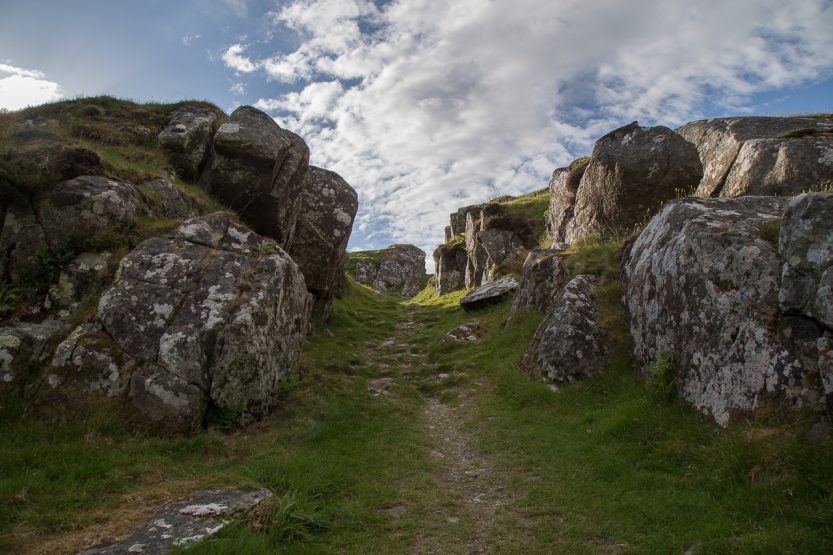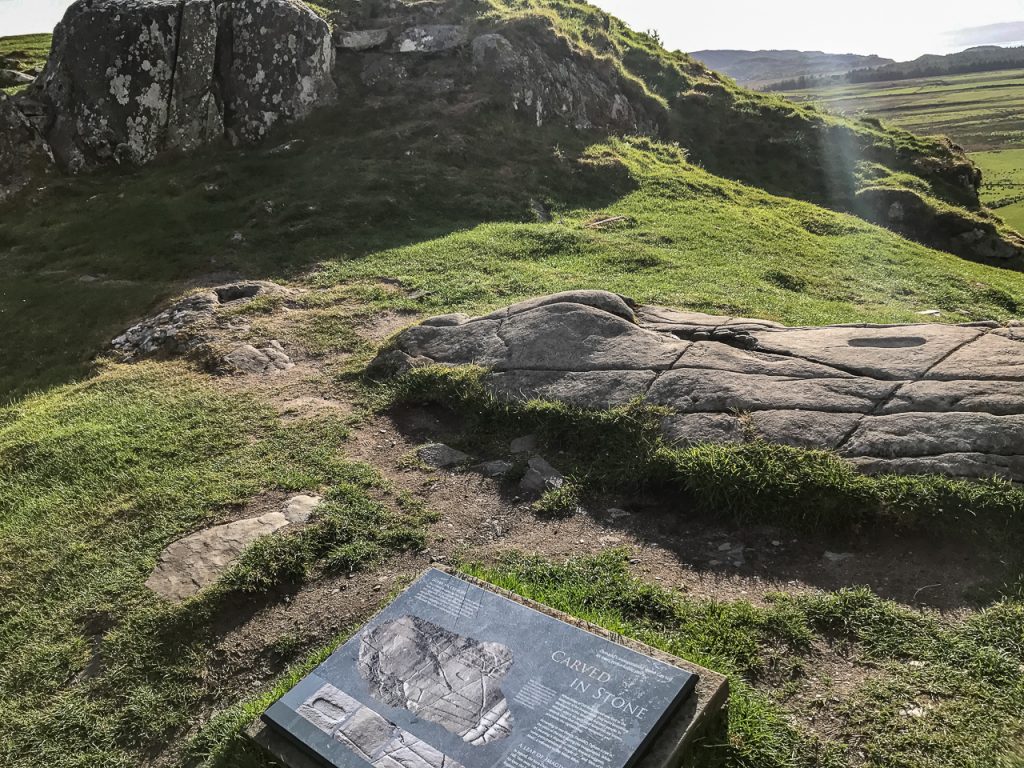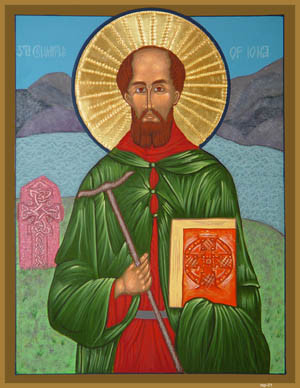
The remains of Dunadd Fort in the Kilmartin Glen in Argyle, Scotland rise out of the Glen like an old boulder dropped from the heavens. Everything around it is flat – and then, there it is. A lumpy hill that is perhaps 4 stories high sitting in a landscape that houses over 300 ancient monuments – the largest collection in all of Scotland. This was the 6th century political and ritual site where the first Scottish Kings were crowned, and where they ruled from. Here is a one minute video showing the path from the valley floor to the Citadel.
This site not only has an ethereal feel at the top, it vibrates with ancient, almost celestial energy. The spiritual energy is almost overwhelming when one climbs to the top alone. The entire ascent to the top becomes a walking meditation.
The Kilmartin Glen has over 300 ancient monuments in a few square miles. Dunadd is one of them and situated at the end (or beginning) of a linear trail that holds most of the megalithic structures.
When I set out to explore the ancient monuments, I was looking for the stone circles, the standing stones, the tombs, the rock carvings. As I up the A816 from Lochgilphead I knew that I was coming into the Glen and was watching for directional signs to the monuments. I happened to look left and saw this lone, rocky hill and thought how strange it was to be situated there in all of that flatness. Then I saw the signage for Dunadd Fort and realized that this rock in the middle of the Glen was, in fact, one of the monuments.
Though fortifications of this fort go back 2400 years, the hill’s use as a royal site and political center run from about 600 to 750 AD. This was the royal seat of the Dál Riata tribe. They had a common language and culture with the Ulster tribes in the north of Ireland. The descendants of this tribe were the Scotti (the name Scotland derives from this group).
Though it looks like a lumpy rock, it was once fortified with a protective rampart there were also dwellings, a well that served the entire community on the rock and even an industrial center where jewelry was made for royalty and the social elite. Up at the top of the rock was the site where royal rituals took place.

The most impressive artifact remaining on the site is the Inauguration Stone. At the top of the hill (at the lower elevation) is a flat stone with a footprint carved out. There is also ogham writing on the stone and other writings believed to refer to sacred rituals. The candidate for king would be brought here in a procession and a ritual would be carried out on this spot where the pending king would place his foot in the footprint on the sacred stone signifying that he was married to the land – and hopefully this marriage between king and land would yield fruitful harvests and a blessing on the people.
The actual stone used in the 7th and 8th century lies beneath the one we see currently at the crest of Dunadd. A concrete replica was placed overtop the original in order to protect the original stone. But it gives the visitor a glimpse of what the actual stone looked like in this place.
I snapped a photo (pictured above) of the stone and noticed later that a beam of sunlight was shining directly on the footprint. It was a magical time up there all by myself.

Image of what the Citadel may have looked like.
Directly above the Inauguration Stone at the highest point on the hill, is a slight rise to a flat terrace level. Researchers believe this was a citadel – an enclosed building where political discussions were held. It was the governmental meeting place situated perfectly at the top of the hill.
The panoramic views from this plateau are stunning and take in all of the Kilmartin Glen which sits on the banks of the snaking River Add. The island of Jura can be seen in the distance. Iona is only 35 miles away.
 The Irish have a wonderful tale about the self-imposed exile of St. Columba. After his prideful actions caused a war between Irish tribes that cost lives and treasure and brought sorrow to the people, Columba got in a boat with twelve followers and set out from Derry heading for a new home. He stopped at the first island he came to where he could no longer see his beloved Ireland and that was Iona where he founded (started) Christianity in Scotland.
The Irish have a wonderful tale about the self-imposed exile of St. Columba. After his prideful actions caused a war between Irish tribes that cost lives and treasure and brought sorrow to the people, Columba got in a boat with twelve followers and set out from Derry heading for a new home. He stopped at the first island he came to where he could no longer see his beloved Ireland and that was Iona where he founded (started) Christianity in Scotland.
Scottish historians believe that Columba negotiated with King Comgall in about 563AD to use Iona for the founding of a monastic community. That negotiation would have most likely occurred in this Citadelidel on the top of Dunadd Fort. Remember these Argyle tribes were related to the northern Irish. They spoke the same language and shared an ancestral history. It’s likely that the King would benefit by having Columba found a monastery because monastic communities brought education to the people and Columba had a successful track record a mile long.
So while the story of the meeting between Columba and King Comgall isn’t as romantic as the Irish story of sailing into the west and arbitrarily landing on Iona, it’s quite a rush to stand on the Citadel at Dunadd Fort and imagine that you’re standing in the same spot where Iona and Christianity were likely negotiated by King and Monk.
Setting all the history and stories aside, Dunadd Fort has an energy that is nearly palpable at the top. Climbing it requires great care both ascending and descending, but it can be done carefully. Great care should be taken if the stones are wet because they are slippery. The views and the atmosphere for meditation are worth the effort.
Content and Photos (C) copyright 2018 by Travel Hag Tours, LLC unless otherwise stated. All Rights Reserved. Use only with written permission.
Design by NXNW.